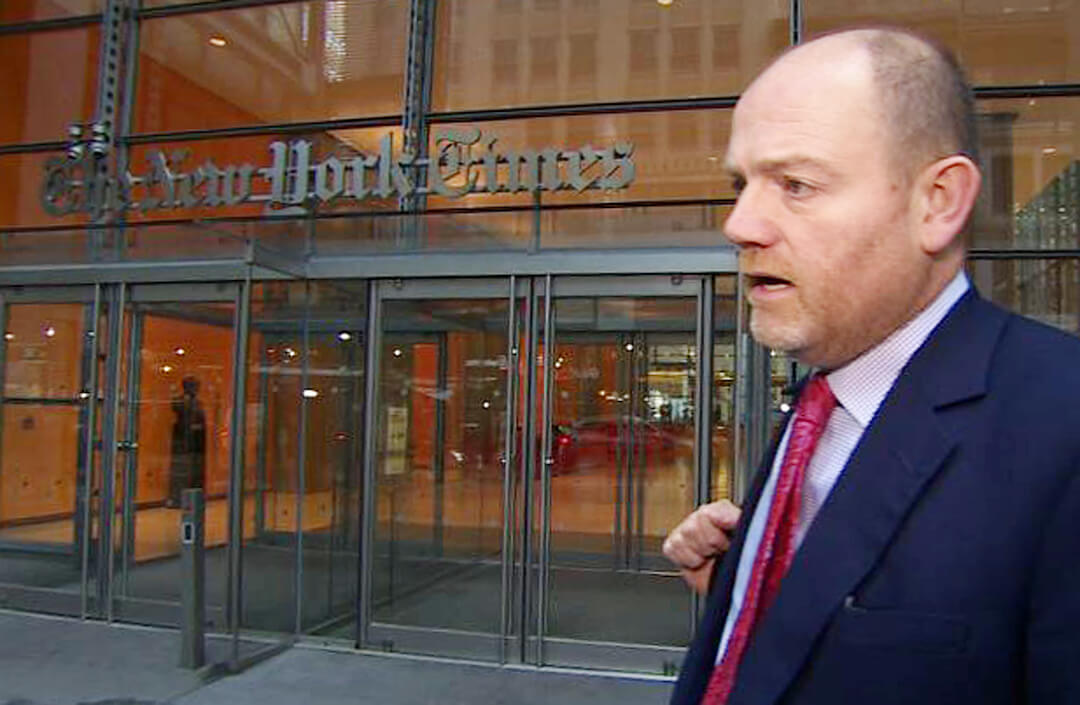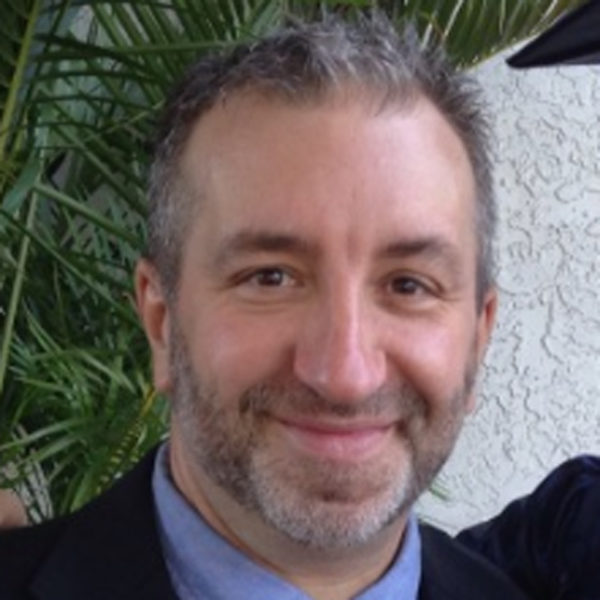David Zaslav, the chief executive of CNN’s parent company, Warner Bros. Discovery, named a network outsider to the top position of CNN without an extensive search — a move that raised eyebrows within the network.
That’s what happened when Zaslav hired Chris Licht to run CNN in February 2022.
That’s also what happened on Wednesday when Zaslav named Mark Thompson, the former chief executive at The New York Times Company and the former director general of the BBC, to take over the news network.
First, the official announcement. Thompson takes over for Licht, who was let go after a disappointing year highlighted by slumped ratings, low company morale, criticism over a town hall with former President Donald Trump and a brutal profile in The Atlantic that hastened his exit. Thompson will start Oct. 9.
In a statement, Zaslav said, “Mark is a true innovator who has transformed for the digital age two of the world’s most respected news organizations. His strategic vision, track record in transformational leadership and sheer passion for news make him a formidable force for CNN and journalism at this pivotal time.”
But is this “pivotal time” a questionable time to make a move? CNN seemed to have stabilized in the wake of the Licht era with a four-person team serving as leadership. While having four people in charge isn’t ideal and wasn’t going to go on forever, employees appeared content, and it figured to be the plan at least through the 2024 election. In June, Zaslav said he was going to take his time to find a new leader and that the search could take “months.” Technically, that’s true. But most assumed that search would take more than just over two months.
Semafor’s Ben Smith and Max Tani both wrote in the past week that Zaslav appeared to have Thompson in mind all along.
CNN staffers might take a wait-and-see attitude with Thompson, especially after Zaslav’s last choice (Licht) proved to be in way over his head. However, Thompson does come in with plenty of journalism chops, and CNN’s Oliver Darcy wrote, “Some staffers feared it was too soon for another executive shakeup, but many expressed excitement at the possibility Thompson would be selected for the assignment.”
Dean Baquet, the former executive editor at The New York Times, told the Times’ John Koblin, Benjamin Mullin and Katie Robertson that Thompson was the “perfect hire.” Baquet added, “He understands change, which is the most important quality for whoever they chose as a leader — someone who understands what things are going to have to change. Newspapers were a little bit of a learning curve for Mark just because he had never been at a newspaper. But this is his world. He’ll be very comfortable in that world.”
Baquet worked with Thompson at the Times. The Times reporters noted that “Mr. Thompson started at the BBC in 1979 as a trainee and ascended to director general, the broadcaster’s top position, in 2004. He ran both the editorial and business operations in that role, as he will at CNN. He joined the Times Company as its chief executive in 2012, the top business-side job at the organization. He was among a group of executives who revitalized the company financially by greatly expanding its digital subscription business, which was still in its infancy when he started.”
That digital experience is why Thompson just might be the right fit for CNN, which is looking to dedicate more resources to its digital product than a cable product that struggles more and more each day.
Darcy wrote, “As the lucrative cable television business dries up, CNN and other news networks will need to transform their business to fully embrace digital and streaming. CNN.com is among the most trafficked news destinations in the world but generates far less revenue than the television operation and has no subscription business.”
And, the Times wrote, “A top challenge for Mr. Thompson at CNN will be its transition to a more digital-focused future as the cable business declines. Several CNN executives reached Wednesday said they believed that he would have a broad mandate to impose changes at the network. CNN has already begun testing a registration wall on its website, according to a person with knowledge of the change, who said it could be an early step toward eventually charging CNN’s readers for online access.”
Thompson also arrives at a time when CNN’s cable TV news product has stabilized a bit. The network finally has hammered out its prime-time schedule by putting Kaitlan Collins in the 9 p.m. slot and Abby Phillip at 10 p.m. It also has figured out its morning show. However, ratings still remain behind Fox News and MSNBC most of the time.
Thompson has the kind of background that will immediately give him credibility in the newsroom. And he might be welcomed simply because he is not Licht.
Darcy reported that in Thompson’s first memo to staff, the new CEO wrote, “We face pressure from every direction — structural, political, cultural, you name it. … There’s no magic wand that I or anyone else can wield to make this disruption go away. But what I can say is that where others see threat, I see opportunity — especially given CNN’s great brand and the strength of its journalism.”
Covering the storm

Floridians clean up debris caused by Hurricane Idalia in front of their home on Wednesday in Perry, Fla. (AP Photo/John Raoux)
It has been an unsettling week for those of us in Florida as Hurricane Idalia pounded the western side of the state from the Florida Keys all the way to Tallahassee. Hit particularly hard were the Big Bend area of the state, which was where the major hurricane made landfall, and the Tampa Bay area, which had some of the worst flooding many in these parts had ever experienced from a storm.
What about the media coverage of the hurricane?
As someone who lives in the Tampa Bay area (St. Petersburg), I did what the locals always do in these storms: I hunkered down with local media coverage. Never is local media, especially local TV, more valuable than when viewers are facing a potentially life-threatening storm. It’s a time when local coverage is way more beneficial than national coverage.
While I can’t speak for all media outlets in all major markets, my guess is the country is full of the kind of incredibly hard-working journalists that there are in the Tampa Bay area.
I put my remote control hard at work flipping between five local TV stations, including the one dedicated to news 24 hours a day, to watch coverage of the storm. I did so partly because it’s my job, as a media writer, to watch and critique the media. But I mostly did so because I, as a St. Pete resident, desperately needed the information to keep safe.
The Tampa Bay coverage — from the meteorologists telling us what was happening and what was expected to happen next to reporters venturing into dangerous areas to cover the storm — was impressive. Each of the stations showed the depth and talent of their reporting rosters by having reporters and photojournalists in what seemed like every important part of the viewing area. No matter where you live in the market, it felt like the stations had a reporter there to pass along valuable information. Working around the clock, anchors kept the information flowing and never (at least while I was watching) overhyped the storm or the story. The storm was dangerous enough without any irresponsible coverage and that message seemed to be passed along to all the journalists out in the field and in the studio.
Meanwhile, the same could be said for the local newspaper in Tampa Bay — the Tampa Bay Times. (Disclosure: the Times is owned by Poynter.) The website had constant updates with excellent reporting and powerful photos and video. The Times, too, displayed an ability to spread reporters into all the crucial areas to give readers a true sense of how the storm impacted the area.
As far as national coverage, that too was impressive.
Anytime national news moves into a specific area to cover a major story — usually some kind of weather event — locals occasionally roll their eyes at the national outlets not having a good handle on the area. They might misidentify locations or misrepresent a landmark, and that tends to ruin credibility. Often, national coverage only reinforces that it doesn’t have the expertise of local coverage.
But I must say that when I did watch national coverage, especially while the storm was making landfall in the Big Bend area of Florida, it was spot on. I’m talking specifically about CNN, Fox News, MSNBC and The Weather Channel. CNN had a dozen reporters in the state. Fox News leaned heavily into its excellent weather network, and its coverage all day Wednesday was superb. MSNBC was quick with interviews of state leaders and live reports. And The Weather Channel had spectacular live coverage with scary video of trees cracking and crashing to the ground in Perry, Florida, where the storm was especially devastating.
The Weather Channel’s Reynolds Wolf, stationed on a porch, described the sound of a tree breaking as “almost like a gunshot.” (Check out this scary footage of trees and branches falling.)
Wolf said, “You can take whatever precautions you possibly have and if you’re out there and one of those things lands on you, you are crushed like a bug.”
After another huge limb fell to the ground during a rush of hurricane-force wind, Wolf said, “Absolutely punishment. … Folks, I am paid to speak, but, I tell you, there are times when you are just speechless — where the words just do not arrive.”
What about the networks?
You might have noticed that I didn’t write much about the major networks — ABC, CBS and NBC — and their coverage. That’s because local stations in Tampa Bay carried local coverage and preempted any national coverage. It wasn’t until the evening news on Wednesday that local stations in Tampa Bay broke away from their round-the-clock coverage.
But the night newscasts gave a strong recap of the storm, each dedicating the first 10 minutes (that’s a significant amount of coverage) to Hurricane Idalia.
USA Gymnastics denies media credential
Superb column by USA Today columnist Christine Brennan, who calls out USA Gymnastics for denying a media credential to a journalist who has extensively covered the issue of abuse in gymnastics for 20 years. Scott Reid, who works for the Orange County (California) Register, was denied a credential to cover the recent 2023 U.S. Gymnastics Championships.
As Brennan smartly wrote, “If there is one sports organization in this country that deserves every tough question that journalists can throw its way, forevermore, it’s USA Gymnastics. What that national governing body did, and didn’t do, led to the worst sexual abuse scandal in both Olympic history and American sports: the abuse of hundreds of U.S. gymnasts, including the great Simone Biles.”
The USAG blew this one.
“I’m just dumbfounded that this happened,” Reid told Brennan. “The sport still has a lot of questions to answer and I was hoping to go up there and ask those questions. You’re celebrating this once-in-a-lifetime athlete in Simone Biles, who is returning to the national championships, and you’re trying to ask questions and get answers that I know our readers want to know.”
Jill Geer, chief communications and marketing officer for USA Gymnastics, told Brennan in an email, “Media requests for this event were high and exceeded the anticipated capacity of the media tribune. In our approval process, we prioritized outlets and reporters who have consistently covered gymnastics competitions over the last several years. A wide range of national outlets were credentialed, including many who have been very critical of USA Gymnastics.”
OK, that explanation is laughable. Let’s say it’s true that the media requests outnumbered expectations — which I find hard to believe — USAG should be thrilled that many reporters want to cover their event. They need to do everything in their power to accommodate everyone. And it’s not like the Orange County Register is some rinky-dink, niche news outlet.
Geer did say the organization is still evolving and praised Reid’s work, saying, “The work that Scott and others have done has been important for raising awareness around abuse in sport and society. We have not shied away from difficult questions and have always replied to his inquiries, and we will continue to do so.”
Reid wrote a lengthy piece in the Orange County Register about his work and being denied a credential. And he called out Geer’s suggestion that USAG was overrun with media requests.
He wrote, “Geer’s explanation didn’t ring true since a number of major American newspapers with long histories of covering the sport chose not to join the media stampede to San Jose. From Section 107, directly behind the media section, there were plenty of empty seats on press row. This isn’t the first time Geer’s attempt at spin hasn’t held up and I’m certain it won’t be the last either.”
Behind the scenes of a nightmare
Earlier this week, there was an active shooter on the campus of the University of North Carolina at Chapel Hill. The suspect was eventually arrested after the fatal shooting of a faculty member. But before he was apprehended, fear gripped the campus.
The Daily Tar Heel, the student newspaper at UNC, captured that fear with a haunting front page on Tuesday. They simply printed the words of some of the frightening texts that students sent and received during the uncertain time.
My Poynter colleague, Amaris Castillo, spoke with those responsible for that front page in “How The Daily Tar Heel designed the front page everyone is talking about.”
Castillo explained in her story: “Emmy Martin, the 2023-24 editor-in-chief of The Daily Tar Heel, was in bed and looking through all the text messages she’d received during the lockdown. She hadn’t had a chance to respond to them. She also saw social media posts from some of her UNC peers who posted the text messages they’d received.”
Martin told Castillo, “And that’s kind of when it hit me. Everyone was getting these texts, and we were all kind of not having the same experience, but having an experience we all shared together. That’s when I kind of knew that that is our front page.”
Check out Castillo’s story to go behind the scenes of The Daily Tar Heel’s front page.
Media tidbits
- The moderators for the next Republican presidential debate have been named. Fox News’ Stuart Varney and Dana Perino and Univision’s Ilia Calderón will co-moderate the next debate, which will take place on Sept. 27 in Simi Valley, California. The debate will air from 9 to 11 p.m. Eastern on the Fox Business Network and Univision.
- The Washington Post’s Laura Wagner with “A crackdown on ‘woke’ coverage is tearing Atlanta magazine apart.”
- Mediaite’s Alex Griffing with “August Ratings: Fox News Extends 30-Month Winning Streak With MSNBC Hot On Its Heels.”
- The New York Post’s Andrew Marchand and Michael Rosenstein with “Barstool Sports to cut staff by nearly 25 percent as mass layoffs loom.”
- Awful Announcing’s Sean Keeley with “Paul Finebaum, Tim Brando blast Nick Saban for being ‘bully’ to local media.”
Hot type
- The Wall Street Journal’s Joe Parkinson, Drew Hinshaw, Jack Gillum and Benoit Faucon with “Prigozhin’s Life on the Run: Wagner Chief Used Jets to Evade Tracking for Years.”
- For The New York Times Magazine, Jennifer Szalai with “When Your ‘Doppelganger’ Becomes a Conspiracy Theorist.”
More resources for journalists
- Bring Poynter to Your Newsroom, Classroom or Workplace.
- Poynter Leadership Academy for Women in Media (Mar., May & Sept. 2024) — Apply by Sept. 8, 2023.
- Power of Diverse Voices: Writing Workshop for Journalists of Color (Nov. 15-18) (Seminar) — Apply by Sept. 15.
- Subscribe to Poynter’s Friday newsletter, Open Tabs with Poynter managing editor Ren LaForme, and get behind-the-scenes stories only available to subscribers.
Have feedback or a tip? Email Poynter senior media writer Tom Jones at tjones@poynter.org.
The Poynter Report is our daily media newsletter. To have it delivered to your inbox Monday-Friday, sign up here.







Comments